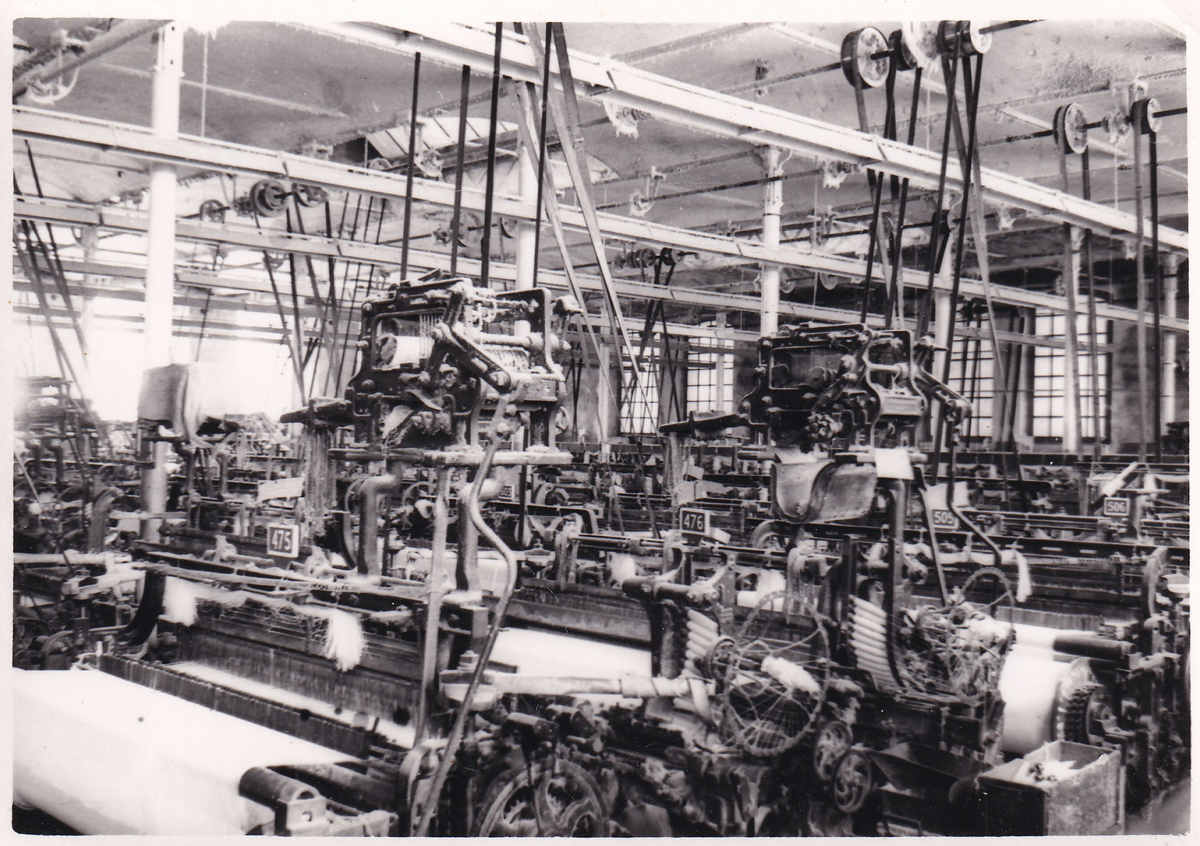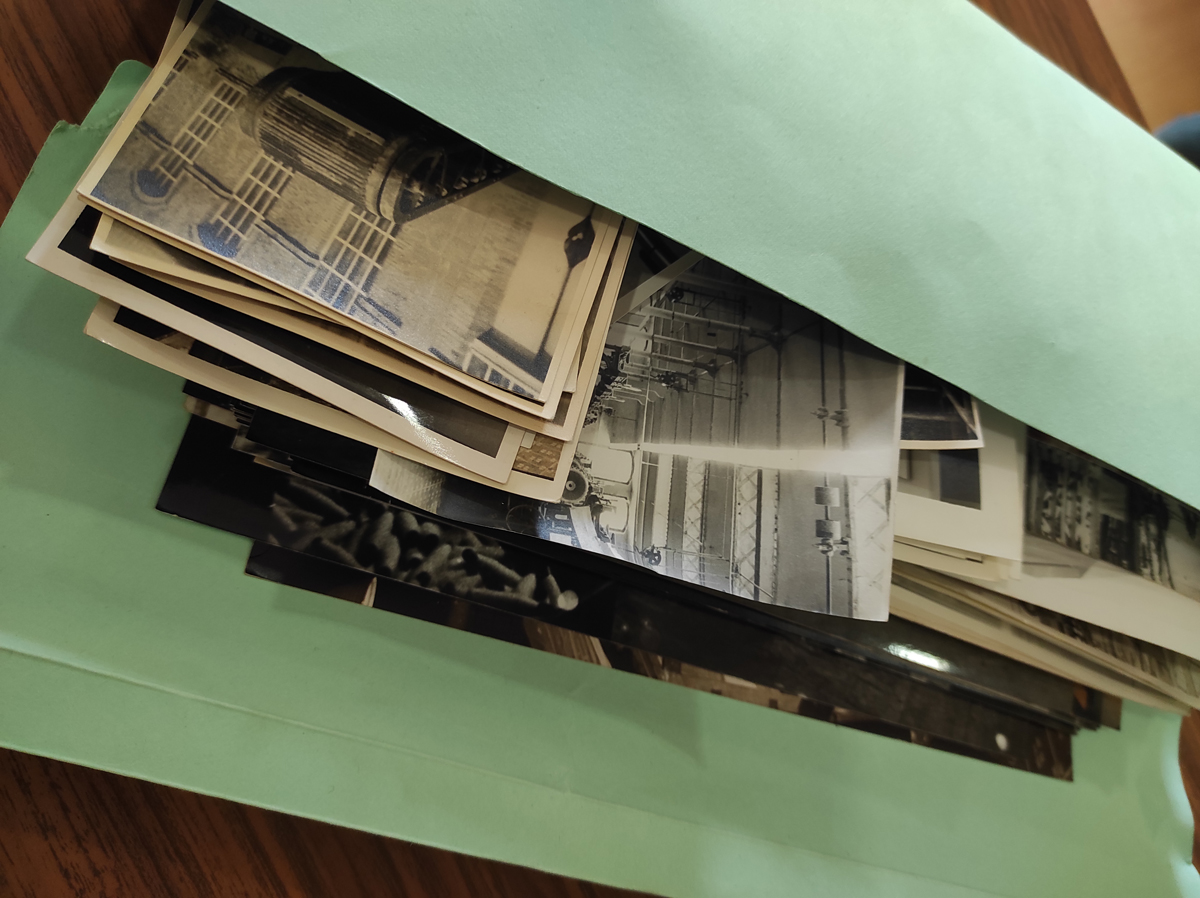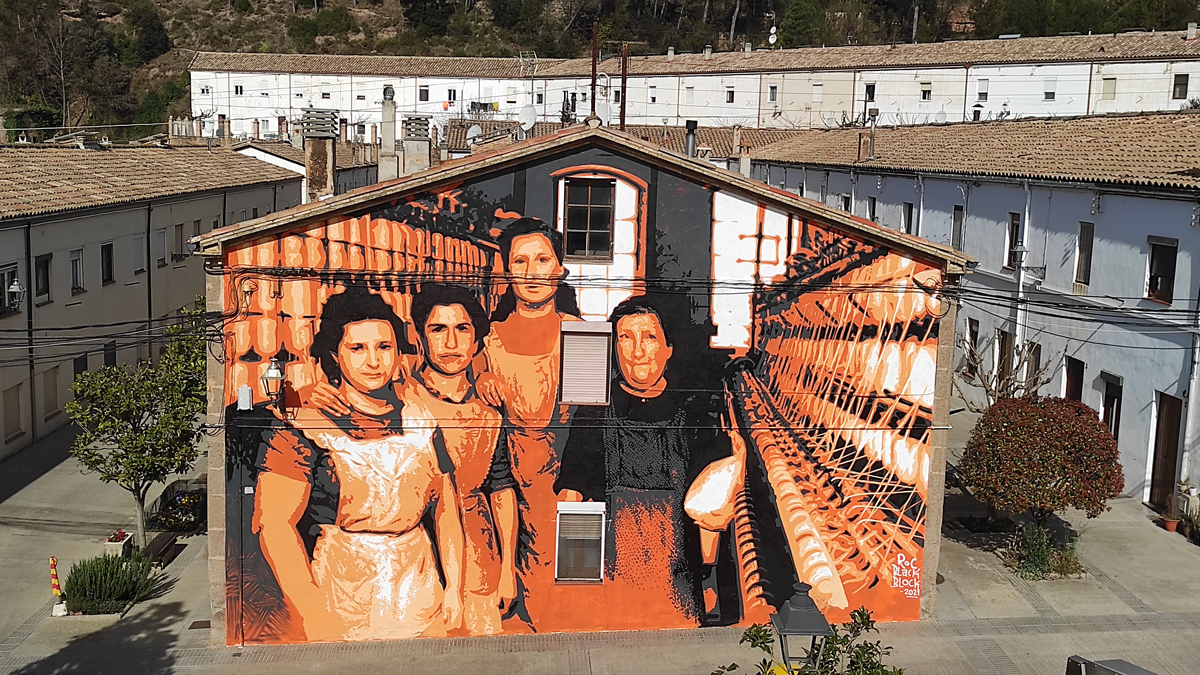Spinners, knitters, weavers… and we could be even more detailed because almost behind each of the machines there was a woman in one or other moment of the more than 150 years of history of l’Ametlla de Merola.
HISTORICAL CONTEXT
A joint collaboration with: Rosa Serra Rotés
Feminine named machines: the carda, the “opener”, the “mechera”, the comber, the spinning machine, the assembler and the continuous, that changed everything. The spinning industry was for many years a world of women and little girls; bit by bit simple and club looms with clippers for automatic fabrics, with revolver, wide looms for bedsheets and drawer looms for coloured clothes were introduced in the knitting world
Machines from Great Britain, Germany, Switzerland, with legendary names such as Plato Brothers & Ltd., Obermaier, Rieter, Mertz, Escher Wyss & Cia, Socieéé Hidro-Mecaniques…, arrived through importers and promptly textile factories in our country were improved by the Public Limited Company “Sierra de Manlleu”, “Ferran Casablancas” from Sabadell, the Metallurgy Textile and the Industrial Machinery of Manresa and “Llançadores Ubach” from Sallent, just to name a few.
From these women’s work and men that were directors, butlers, managers, writers, stokers, fullers, locksmiths, builders, electricians, and also weavers and specialists in the spinning and knitting. All kinds of cotton fabrics were made. Between their commercial names, we find batiste, flannel, cretonne, wadding, drill, organza, cotino, corduroy, muslin, percale, poplin, tarpaulin, serge, twill, bedspread.

Technically they were known with different names: fabrics Ullat – threads from the warp and the passes separated-, fabric covered-up – threads from the warp and the passes were thin-, fabric listed – with line in the direction of the warp – fabrics sampled – with small drawings – fabric carved with Jacquard’s drawings, fabric of ladies – with regular squares- characteristic of the tablecloth.
In the Ametlla de Merola and other textile factories of Alt Llobregat, earliest the cotton arrived from Barcelona’s port with waggons and a mule pack from the station of Manresa; with the launch of the Economic Railway Manresa-Berga in 1881 they loaded the mules in the station of Sallent and later in 1885 they did it in the halt of Navàs. Since the 1920s decade, cotton arrived directly from Barcelona with the lorries of haulers from Navàs and Puig-reig. The cotton had a long journey from the United States – it was from New Orleans, Savannah, and Charleston- it came in bales that weighed around 300 kilos; Brazilian cotton bales were smaller, from 180 to 200 kilos, like the Egypt ones.
The fabrics left the Ametlla de Merola to start another long and complex journey. The finished fabric was sent directly to factories specialised in whitening and stamping. After these processes, the final product was sent back to the company’s storehouse in Barcelona. These fabrics, and others that did not need these steps, were distributed with the help of the travellers to many clothes shops. Capitals of province, region, and little villages, mainly throughout Catalonia and Spain.
A long road that came back mainly to women’s hands, to the ones working in big studios of curtain making, decorative clothing for big houses, hotels, and public buildings, and also to the dressmakers and the majority of women that made clothes at home. The latter thanks to the sewing machine, another machine of feminine name.
At the big, medium-sized, and small dressmakers’ studios, dresses were made following the patterns that arrived. They were elegant models from magazines, films, parades, and collections from the great dressmakers. They made clothes for the department stores that were growing in popularity and presence. Women and little girls were and are, mainly, the nameless protagonist of the main firms working on clothes production.
A thread that extends for more than a hundred and fifty years. An incredible heritage materialised in the company town of l’Ametlla de Merola that explains a local story also global, still alive because it is based on a proud and respectful community with its past and present.
Roc Blackblock’s mural moves me. It is a tribute to different women’s generations that protagonist this local and global story. The story of worker women from l’Ametlla de Merola.
Rosa Serra Rotés (Puig-reig, 1958) graduated in Geography and History from the University of Barcelona, with the Diploma of Advanced Studies from the same university. About her professional activity, she has been a high school teacher (1982-1998); director of the Museum of the Mines of Cercs (1999-2005); director of a consultancy’s office (2006-2010), and in charge of different tasks of process and coordination at Diputació de Barcelona (2011-2019). She has published books and articles about Berguedà’s region history and its industrial heritage, primarily about companies towns, and coal mining. She is a member of Àmbit de Recerques del Berguedà since its foundation, and also the director of L’Erol magazine since 2005.

WORK PROCESS
The work process started when the Cultural Association Esplai de l’Ametlla de Merola contacted Murs de Bitàcola intending to develop a mural project that raised awareness about the traits of the village and the community, focusing on two meaningful topics: the singulars characteristics of Ametlla de Merola as a textile company town from Llobregat region as the cultural activity, with trajectory and long history, that defines the village (giants, capgrossos, shepherds, theatre…).
During our first visit to the village, Murs de Bitàcola had access to the photographic archive, had a look at the space where the mural would take place and cared for the explanations and details shared by the neighbours. To walk through the textile company town streets, to visit an unchanged village and consult the photographic archive were a privilege to which we had access. The photographic archive allowed us to spend the morning sailing by images of the company shop, coins and consumer goods, the studios and the machines. Although their great historic value, these were images of highly documental nature where the social and human part of the village was perfectly reflected
The talks with the community and the photographic material helped us visualise the past at Ametlla de Merola and allowed us to develop the mural’s design, Murs de Bitàcola presented three designs to the Association, each one with different interest point, so the community were the ones choosing the definitive design. On the sketch chosen by the neighbours, the protagonism was upon the community and reflected the village’s memory, it also raised awareness of women’s role in the textile industry, therefore, in Ametlla de Merola.
The work’s execution was highly pleasant, the mural had a great reception by the whole community and became an event at the village. Some neighbours carefully followed the elaboration process throughout the three days it lasted. Thanks to this, we were able to know more about the women portrayed in the photograph that still live in the village. As a neighbour told us, the protagonists of the image are the Teresina (first on the left); Carme (second), who was from Navàs and during the week lived at the “Girl’s House” that the company build for up to 150 girls that work at the village, they went back to their near villages and country houses in the weekends. The third woman was also named Carme. The last one, whose name we were not able to find, was from Can Aguilar. The photography is from the fifties.
“The Spinners” mural has been integrated into Ametlla de Merola landscape, another element to have in mind the past in the present.

